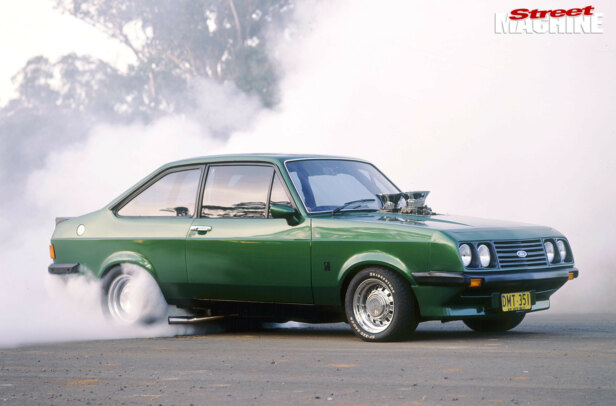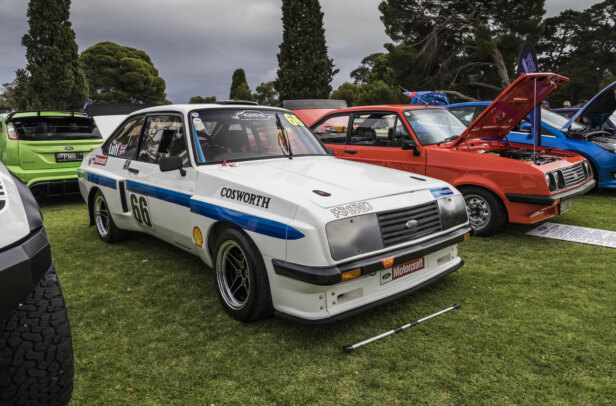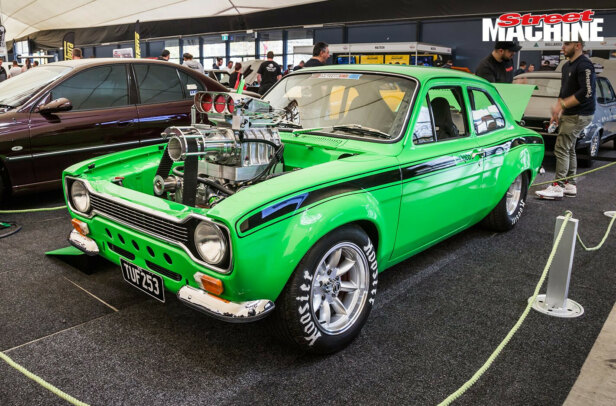This is going to make your eyes water. Not tears of nostalgia, or envy or sadness. Nope — tears from a good old fashioned kick in the groin.
First published in the Oct/Nov 1985 issue of Street Machine
You (those who wrote to us, that is) said you wanted to see some four-cylinder street machines. Sweet little beepers that were fleet on their feet and oh-so neat. Possibly even Japanese. This, dear and gentle reader, is for you. Only ‘RISKY’ isn’t Japanese — well it’s a bit Japanese. But, we’ll come to that bit later.
The street machine movement pays homage to the cars of the West Coast (and that doesn’t mean Rottnest Island). Cars which have engines that grunt and an appearance that confounds, amazes, amuses and, most of all, says ‘power’.

Sure, some (in fact most) good Australian street machines combine the best of Oz iron with good ol’ Yankee know-how. But the recent heritage of this country is European and even the most dedicated SMer would have to admit that Europe has — from time to time — built some very quick blasters. It took Henry’s European operation to give birth to one of them — Ford Escort RS2000.
For Ralf Boehner it was his dream car. Small enough to make sense in a city chocked with buses and trucks

and grandmothers wearing white on their way to a bowls tournament. Powerful enough to move from one set of traffic lights to the next as quickly as almost anything else.
It took one and half years from start to finish — or the finish that we see here. As this is being written the car is with Garry Wilmington for massive rebuilding. But more about that later.
Ford’s two litre single overhead camshaft two litre engine is a brick. Strong. Very strong. It’s a good starting point for a much modified street machine.


Ralf’s car is radical. The engine was stripped and rebuilt with a fully balanced crank and flat-top high compression pistons running 10.5 on hardened rods.
Bob Riley prepared the much modified cylinder head by fitting a 72 degree billet camshaft, FIA valve springs and Manley stainless valves. The headers were hand fabricated and a Lynx manifold was used to support a pair of 45DCOE Weber twin-choke carburettors. Ignition was taken from a box marked “Bosch works racing electronic’.
On the understanding that this was a street machine to be made for a quick spurt off the line, Ralf opted for an unusual transmission specification. The standard four speed would have been too short in the legs with a sprint diff, so a Celica five speeder was grafted to the back of the bell housing. The flywheel had been machined and lightened as far as possible.

Over-the-counter alternative ratios for the RS2000 diff are rare in Australia, so Ralf had a (wait for it, wait for it) Nissan 720 truck unit fitted. At first glance that’s an odd diff to fit to an Escort, but makes good sense when you realise that it has a ratio of 4.6:1 and massive 10.5 inch drum brakes. This gave the car the ratio it needed for green light grands prix and all the braking it’s ever likely to need. The brakes were designed for a one tonne truck, so they’re fine for a car. Front discs needed ventilation. There weren’t any available, so Ralf had them made — at no small cost.
As a matter of interest, engine mods have given the Celica gearbox and clutch a hard time. So Ralf has had to have the clutch swapped for a solid centre button unit and the Celica box has been replaced with a fully imported unit from a Celica twin-cam. This has proven strong enough to cope with the extra engine power.

Suspension has been pulled out, remade and modified. At the front heavy duty lowered Lovells coils replace the originals. At the rear, reset leaf springs have been fitted with an extra leaf added for heavy duty work. Pedders shock absorbers have been fitted front and rear.
Neale wheels are fitted at both ends. The 15×7 Gold Rakers at the front are fitted with 205/50/15 Yokohama A008s (a much underrated tyre, by the way) and the 15×8 rears are fitted with 225/50/15 from the House of Yokohama, too.

Inside RISKY there is a basic RS2000 dashboard and instrument panel. But black is Ralf’s preferred colour and it abounds. The seats were reupholstered by Scheel and Mr Trimmer retrimmed the doors with black velvet. The other black velvet, including the roof lining, was installed by Kustom Image which also carried out bodywork modifications. As a safety measure (and also because it looked good) Ralf had a half-roll cage fitted inside. Windows are electric and so too is the aerial for the top-line Alpine sound system. Occupant safety is taken care of with a full race harness.
A Jaguar fuel pump and the car’s battery take up residence in the boot instead of underbonnet.
Ralf wanted steel, so steel he got. Kustom Image made the steel flares and side skirts. An XB/XC GT bonnet insert has been carefully blended into the RS2000’s lines. Door handles and the rear bumper have been removed to give a really smooth line to the truncated Escort’s aesthetics.
The future holds good for RISKY. The car is currently being mechanically rebuilt at Gary Wilmington’s Performance Centre. On the drawing boards is a vastly modified engine. Turbocharging with nitrous oxide injection. The two together — if they can be made to work reliably under street conditions — should make RISKY a beast to be reckoned with.
If you see the numberplate RISKY running up behind, take care. It’s hard to ignore Ralf’s determination and his wallet. There’s just a good chance that RISKY will be able to deliver the goods.



Comments